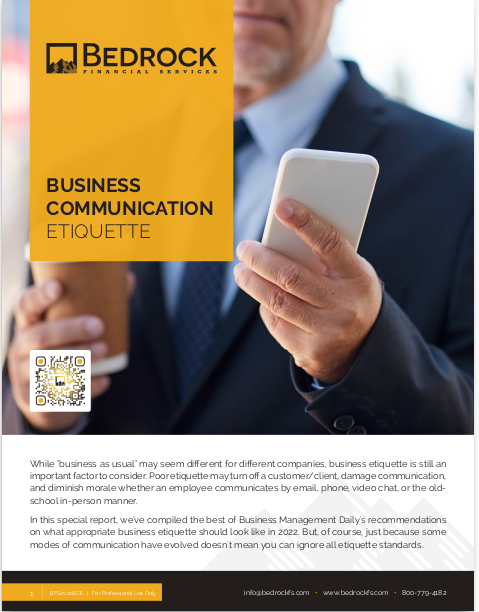Key Takeaways
-
Most product sheets overwhelm, confuse, or bore your client before you ever get the chance to explain.
-
Simplifying, segmenting, and reframing the layout can flip your product sheet from a deal-killer to a deal-closer.
The Real Problem with Today’s Product Sheets
If you’re still handing out the default product sheet from your carrier or agency, chances are you’re losing potential business. Why? Because those sheets aren’t built to sell. They’re built to legally disclose. And while compliance is non-negotiable, clarity and persuasion are just as critical—especially in 2025, where clients expect content that speaks directly to them, not just about them.
In other words, your product sheet might be perfectly accurate, but that doesn’t mean it’s effective.
Let’s break down why this matters.
Most Sheets Are Too Dense to Digest
Today’s consumers don’t read—they scan. Your product sheet needs to match how people take in information:
-
Heavy paragraphs? They’re getting skipped.
-
Excessive jargon? It’s causing confusion.
-
Tiny fonts and cramped layouts? They make your offer look complicated before it’s even understood.
The first thing a prospect should feel when looking at your sheet is relief, not frustration.
Bullet Points Don’t Equal Clarity
There’s a temptation to fix visual overload by switching everything into bullets. That’s only part of the solution. Bullet points look cleaner, but if they’re packed with buzzwords and technical phrasing, you’ve just created prettier confusion.
You need to think beyond formatting and into structure. How is the content grouped? Are the benefits framed around the client’s needs, or the carrier’s features?
Clients Want Relevance, Not a Data Dump
A one-size-fits-all sheet is a lost opportunity. If you’re handing the same sheet to a 25-year-old business owner and a 62-year-old near-retiree, you’re showing that you don’t understand either of them.
Even if the core product is the same, the way it’s framed should change:
-
A younger client wants protection and potential growth.
-
An older client wants predictability and preservation.
When you use the same product sheet for both, neither feels seen.
Visual Hierarchy Matters More Than You Think
In 2025, we live in a world of 5-second decisions. That means your layout matters. A lot.
What should the eye land on first? If it’s a long disclaimer in size-8 font, you’re doing it wrong.
Instead, build your product sheet with the following priority:
-
Headline that speaks to the benefit (not the product name)
-
Short subhead that tees up why it matters now
-
Visual anchor like a graphic, chart, or callout box
-
Client-centered breakdown of benefits
-
Optional: Technical info (but only if it’s truly needed on the first page)
Compliance can—and should—exist. Just not above your headline.
Your Product Sheet Should Say: “Here’s What You Get”
Forget about long descriptions of how the policy is structured behind the scenes. What your client wants to know first is:
-
What does this do for me?
-
When do I get it?
-
How much control do I have?
-
Are there trade-offs I should understand now?
If your sheet opens with terms like “flexible premium deferred product,” you’ve already lost the sale.
Instead, start with plain answers to real questions. Lead with usefulness, not structure.
Generic Phrasing Is a Deal-Killer
Terms like “peace of mind,” “comprehensive coverage,” and “customized solution” don’t actually say anything. They sound nice, but they lack specificity. And that makes clients distrustful.
Be more specific:
-
Instead of “comprehensive,” say what’s included.
-
Instead of “peace of mind,” say what risk is covered and when.
-
Instead of “customized,” explain how the client’s input affects the outcome.
By grounding your benefits in real-world language, you actually raise your credibility.
Repetition Doesn’t Reinforce—It Repels
Many product sheets echo the same benefit in different words across multiple sections. That doesn’t build trust; it builds suspicion. Clients may think you’re padding the sheet because there isn’t enough real substance.
Keep your list of benefits clear, specific, and non-repetitive. Don’t say “tax advantages” three times in three different sections—once is enough if it’s explained clearly.
Replace Feature Lists with Framed Benefits
A feature is what the product has. A benefit is what it does for the client.
-
Feature: Guaranteed interest crediting.
-
Benefit: Your money earns steady growth even in a downturn.
If your sheet is built on feature lists, you’re only halfway there. Take the next step and translate each feature into a relatable outcome.
Segment By Scenario, Not Just Feature
Instead of grouping your sheet into sections like “Riders,” “Interest Options,” and “Withdrawals,” consider grouping by scenario:
-
“If you need emergency funds in year 3”
-
“If your goal is leaving a legacy”
-
“If you want to reduce taxes in retirement”
This approach helps clients see themselves in the product. And once they do, they’re far more likely to keep reading—and buy.
Timelines Help Clients Understand Commitment
One reason prospects hesitate is that product sheets often fail to show time-based outcomes:
-
When does this start?
-
How long until benefits begin?
-
What’s the impact after 5, 10, or 20 years?
Even general timelines make a huge difference. A simple statement like “Available for withdrawals penalty-free after year 5” answers a key question before it becomes a concern.
Don’t Rely on the Sheet to Do the Selling
At the end of the day, your product sheet isn’t the salesperson—you are. But your sheet can support your sale or sabotage it.
Think of it like this:
-
A good product sheet opens the door.
-
A bad one closes it before you knock.
Your job is to make sure every piece of collateral you hand out is aligned with your message, not working against it.
Design Tells Clients What to Value
Design isn’t just decoration. It tells the client what matters most:
-
Big text = important
-
Bold highlights = focus here
-
Boxed sections = this is different
Use design cues strategically. Don’t let the most important feature blend in while a disclaimer takes center stage.
And always check for spacing. A well-spaced page invites the eye to explore. A cramped page pushes the eye away.
Final Thoughts on the Sheet That Sells
In today’s insurance market, attention is currency. Every second your prospect spends confused is a second you’re not closing.
Your product sheet isn’t just paperwork—it’s part of your pitch. It should:
-
Highlight what truly matters to the client
-
Minimize filler language and overused phrasing
-
Match your spoken explanation—not contradict it
-
Respect the client’s time and attention
If you rework even one sheet this way, you’ll likely see your client conversations shift. And once you apply this thinking across all your sales collateral, you stop sounding like an agent—and start sounding like an advocate.
The Sheet Isn’t the Strategy—You Are
The best product sheet won’t sell a weak pitch. But the right sheet, aligned with a strong sales approach, can accelerate trust and decision-making.
At Bedrock Financial Services, we help insurance professionals like you streamline how you present, pitch, and position every product—without drowning your clients in complexity. Our marketing materials, training support, and automation tools are designed to convert attention into action.
If you’re ready to upgrade not just your sheets—but your entire strategy—sign up with us today.







